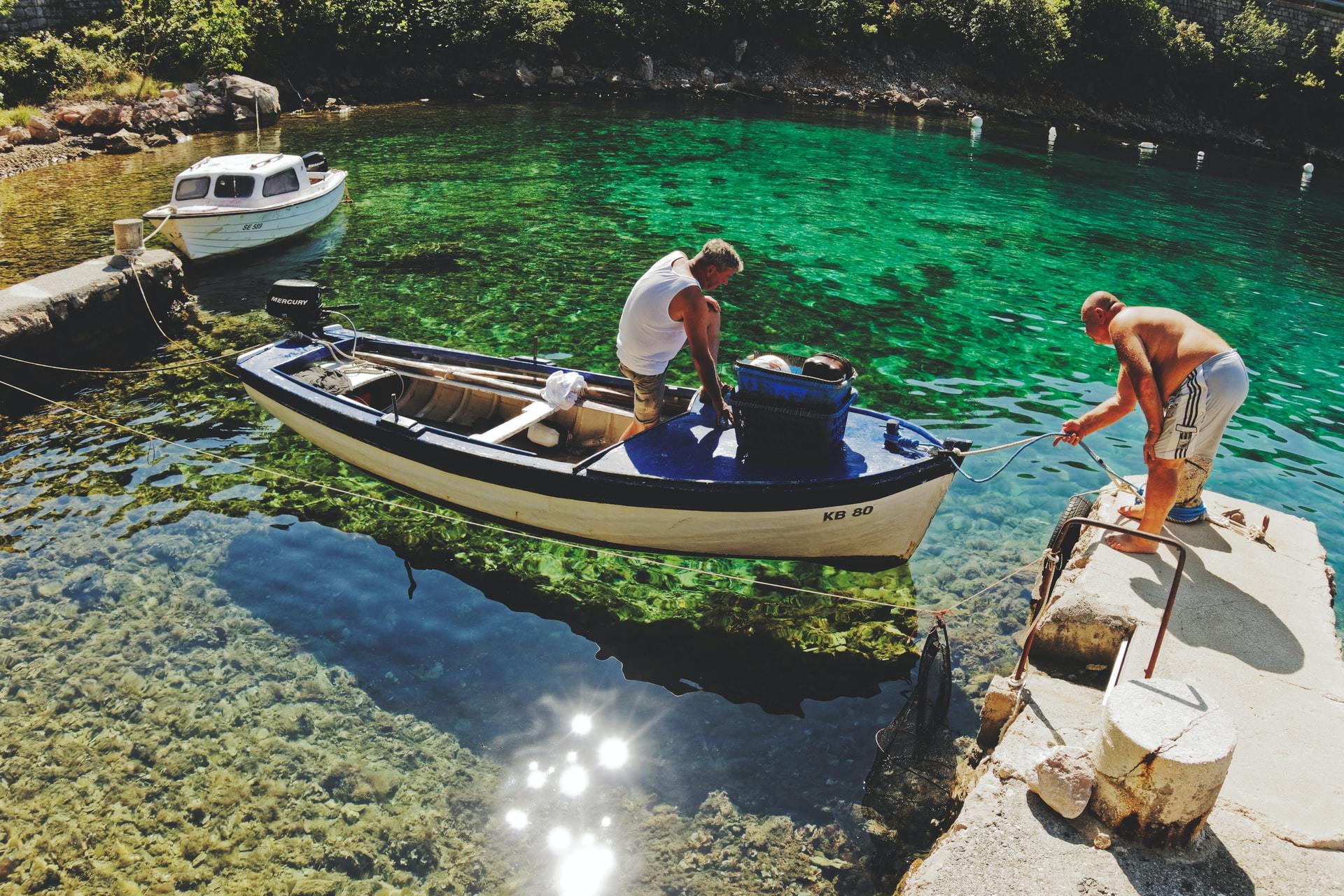How to Use a Fishfinder
Using a fish finder is the practical way to catch a fish. However, if you don’t know how to use one, it can seriously hinder your fishing expedition. There are many types of fish finders available, but they can be confusing to set up and configure. The most difficult thing about using a fish finder is knowing what the settings do, and how to read it.
While you may be thinking about getting a fish finder, you should know how to use a fishfinder to enjoy your fishing trip. While there are fish finders available that makes it easy to set up, your personal preferences can change.
What You Will Need To Be Able To Use A Fish Finder
Fish Finder
You should have the fish finder with you so it makes it easier to follow along with the process. Once you have the fish finder, you can use it to find out what the settings are, and what you need to do. You can follow this tutorial easily when you have the fish finder in the palm of your hand.
Transducer
You should have the transducer with you, as well. You can play around with the transducer to help you find out how it works. You can connect it to the fish finder, and adjust the settings. Toying around with it allows you to become comfortable using the transducer.
Mount
Mounting a fish finder doesn’t seem too difficult, but if you’re having trouble putting the fish finder on the mount, you should know how to mount it. Once you have the fish finder in the mount, you can work on getting the mount put on your boat, if you’re planning on using it.
Manual
A manual comes with every fish finder, and reading through it will help you get an idea of what to expect. You can learn how to change the settings, and how it works. While the manual has plenty of information, you need to know as much information as possible.
Tools
After reading the manual to find out what tools you need, you should collect them to make installation quick and easy. If you don’t have the tools at your disposal, you can rent them from a hardware store. You should check first to find what tools you will need before trying to install the fish finder, otherwise, you won’t complete each task.
How to Use a Fishfinder – Instructions
Step 1: Read the Manual
While it may seem obvious, there are those that will pull out the fish finder without referring to the manual. Even though there is a lot of technical information in the manual, it’s better to have something that will help you out before starting out.
There is crucial information about the fish finder, and the more knowledge you get from it, the better off you’ll be. Whether you’re trying to set the fish finder up, or just looking how the mount fits on a boat, you can get all your specific and technical information from the manual.
Step 2: Mount the Fish Finder
Depending on the type of mount you have, you can refer to the manual to help you install the transducer. A transom mount is different from a trolling motor mount, etc. You should find out what type of transducer you’re going to use, and implement it on your boat.
The manual will tell you how to install the mount, even if you’re using a different mount that it came with. You should also make sure you have the necessary tools to ensure you can install it without having to make a stop at a friend’s house for their tools.
Step 3: Power on the Fish Finder
Now that you’ve got your fish finder mounted to your boat, it’s time to power it on. When you turn it on for the first time, you will be prompted with the pre-programed settings. You can play around with the fish finder to make sure you have it set to your preferences, once you’ve become comfortable.
You should let the fish finder run through the automatic mode, and see how it responds to your movements. One thing you want to make sure of, is that the fish finder is plugged into an outlet so the battery doesn’t die when you’re out on the water.
Step 4: Adjust the Sensitivity
Once you’ve cruised around a little bit with the fish finder on the automatic mode, you can start toying with it to set it to your preferences. The sensitivity setting should be adjusted for the water you’re planning on fishing in. When you’re in shallow water, you should make sure the fish finder is set to a higher frequency.
When going into deeper water, the fish finder should be set to a lower frequency. It can be difficult to get the settings just right, but with some practice and trial and error, you can get the settings set perfectly for your fishing expedition.
Step 5: Set Your Fish ID Setting
After playing around with the sensitivity, you can turn your attention to the Fish ID feature. You can determine what type of fish are in your area, and the quality of the screen depends on the pixel sizes. When you’re first starting out, having the Fish ID feature allows you to target the fish you want to catch.
One setback to the Fish ID is that you won’t get an accurate view of what’s under the waves. However, if you’re uncertain about the fish in your area, you can get an idea of what you’re seeing when you power it on.
Step 6: Leave Your Auto Depth
If you haven’t used a fish finder before, leaving the Auto Depth on its pre-programed settings allows you to get adjusted to the fish finder. You can track the bottom of the water, and is ideal for those that don’t have experience with sonar. When you start to become more comfortable, you can play around with the Auto Depth setting for your needs.
Professionals will typically set the fish finder to look further down, eliminating the first few feet under the surface of the water. It makes sense to do it, because how often do you find the fish sitting right under the surface of the water? You should also adjust the size of the display window to help you get a better view of everything in the water.
Step 7: Upgrade Your Fish Finder
While you might not become a professional overnight, eventually you will learn how to use a fishfinder to your advantage. You should look at getting a Depth Cursor for your fish finder. It is a horizontal line that goes across the screen, and you can move it up and down on the screen.
You can adjust the curser over the arches of the fish, which gives you an accurate idea of where the fish are in the water. You can use this little tool to fish more efficiently, rather than trying to guess where to put your bait.
Step 8: Find the Suppressor Setting
The suppressor setting is a neat feature because it blocks out the background noise when you’re working your way through the water. While a properly mounted transducer may be enough to help you find the fish you’re looking for, using a suppressor can help if you’re in open water. There are a lot of sounds that come from the ocean, and by cutting out some of those sounds, you can properly fish.
One thing you should keep in mind if you’re going to use the suppressor setting, is that it can block the sonar signal you’re putting out. To combat this issue, you can turn the suppressor level down, which still drowns out background noise, and keeps the sonar working perfectly.
Note: You may find more information at FishingPax about fish finder. 
Conclusion
Even if you’re not an avid fisherman, it’s good to know what tools are available for your disposal. This list is important to anyone that is tired of going home empty-handed from an expected fishing trip. While not everyone needs a list that tells them how to get a fish finder to work, for those that don’t, hopefully it helps. Fish finders can be intimidating, especially if you’ve never had the pleasure of owning one before.
If you enjoyed this article, (which I hope you did!) you can comment below and tell us what you thought about it. If you really enjoyed the article, feel free to share it. After all, the more people you can get to join you for a fishing trip will make it a lot more fun. And when your friends see you setting up your fish finder without any help, they’re going to ask where you found out how to use it. Until next time, enjoy your fish finder, and good luck!
Get Instant Access To Our Latest Reviews, Helpful Tips And Exclusive Deals
We like to share product recommendations with you and hope you like them! Just to make you aware FishingLab may collect a small share of sales or other compensation from the links on this page.







